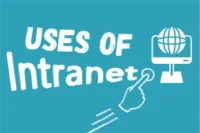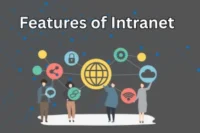Backend Programming Languages: Complete Comparison Guide
Published: 8 Aug 2025
Backend programming languages form the foundation of any dynamic web application. They manage server-side operations, interact with databases, and ensure that frontend elements function as intended. With countless options available, choosing the right one can be a daunting task.
In this guide, we’ll compare the most popular and efficient backend languages to help developers, businesses, and tech enthusiasts make informed decisions.
Key Qualities of Top Languages
Before diving into individual languages, it’s crucial to consider what makes a backend programming language effective: scalability, community support, performance, learning curve, and integration capabilities. Whether you’re seeking the best backend language for scalability or rapid development, aligning the language’s strengths with your project goals is key.
Top Backend Programming Languages
The following are some of the most popular and widely used backend programming languages for modern web development. These languages are known for their performance, scalability, and strong community support across various use cases.
1. JavaScript
JavaScript is almost synonymous with modern web development. It’s not just a client-side language anymore thanks to tools like Node.js, JavaScript has earned its place among the best backend programming languages. Its ability to handle both frontend and backend tasks makes it one of the most versatile backend and frontend languages out there.
Some of the features that make JavaScript ideal for backend coding include lightweight syntax, dynamic typing, and a vast ecosystem of libraries and frameworks. From startups to tech giants, many companies like Facebook and Google rely on it for full-stack development.
Popular JavaScript Frameworks: Express, Next.js, Meteor
Top Websites Using It: Google, Facebook, eBay
2. Python
Python is another powerhouse in the tech world and widely known for its role in data science, but it’s also a top-tier backend programming language. With frameworks like Django and Flask, Python is loved for its clean syntax and massive library support making it a go-to option in the back end languages list.
Many developers prefer Python because of its readability, cross-platform capabilities, and seamless integration with other tools. Major platforms like Google and Pinterest leverage Python for robust backend systems.
Popular Python Frameworks: Django, Flask, Pyramid
Top Websites Using It: Spotify, Pinterest, Instagram
3. PHP
Despite being one of the older options, PHP remains a solid choice in the best back end programming languages category. It was built specifically for web development and continues to power a large portion of the internet, including content-heavy sites like WordPress.
This open-source backend language is easy to learn, supports many databases, and has strong community support. It’s also cross-platform compatible and widely regarded as one of the most secure backend coding languages.
Popular PHP Frameworks: Laravel, CodeIgniter, Symfony
Top Websites Using It: WordPress, MailChimp, Flickr
4. Java
Java is an industry-standard backend programming language trusted by enterprises for building large-scale web apps. It’s object-oriented and runs on the philosophy of “Write Once, Run Anywhere” — making it a highly portable and scalable option in the best backend languages for 2025.
Its features like multithreading, automatic garbage collection, and rich APIs make Java a favorite among developers looking for performance and reliability.
Popular Java Frameworks: Spring, Struts, Grails
Top Websites Using It: LinkedIn, IRCTC, Yahoo
5. Ruby
Ruby, especially with its Rails framework, is a great choice for beginners entering backend development. Known for its elegant syntax and productivity-focused design, Ruby simplifies the process of building web apps and is considered one of the most approachable back end programming languages.
It supports multiple programming paradigms and is used by many fast-growing startups due to its development speed and flexibility.
Popular Ruby Frameworks: Ruby on Rails, Sinatra, Grape
Top Websites Using It: Airbnb, Shopify, Slideshare
6. Golang (Go)
Go, developed by Google, is a modern and efficient back end language designed for performance and concurrency. As a statically typed and compiled language, Go is perfect for scalable applications where speed and security are critical.
Thanks to features like garbage collection, goroutines for multithreading, and a clean syntax, Go has become a favorite in the list of best backend programming languages.
Popular Go Frameworks: Beego, Echo, Revel
Top Websites Using It: Dropbox, SoundCloud, Dailymotion
7. C#
C#, developed by Microsoft, is a powerful back end coding language often used within the .NET ecosystem. It’s widely adopted for building web apps, desktop applications, and even games. If you’re working in a Microsoft-heavy environment, C# is one of the best backend languages to learn.
It’s known for being scalable, structured, and well-supported, all crucial for efficient backend web development.
Popular C# Framework: .NET
Top Websites Using It: GoDaddy, Stack Overflow, Marketwatch
Enterprise Reliability and System Scalability
Java has been a powerhouse in enterprise environments. With robust frameworks like Spring, it handles large-scale backend infrastructure effortlessly. Java’s platform independence and object-oriented structure make it a go-to language for finance, banking, and corporate software.
C#, backed by Microsoft’s .NET ecosystem, is also prominent in enterprise backend development. It’s particularly effective in Windows-based systems and pairs seamlessly with Azure cloud services.
Both are excellent choices if you’re evaluating backend coding languages for business-grade software requiring structure and performance.
Performance-Optimized for Modern Architecture
Go (Golang), developed by Google, focuses on performance and concurrency. Its lightweight syntax and built-in garbage collection make it perfect for building scalable APIs and microservices. If you’re working on real-time systems or cloud-native apps, Go ranks high in the best backend programming languages category.
Ruby, especially with Rails, is known for rapid application development. It emphasizes convention over configuration, enabling startups to launch MVPs quickly. While not as performance-focused as Go, its elegance and productivity can’t be overlooked.
Modern and Emerging Technologies
Kotlin, a JVM-based language like Java, has gained traction for its concise syntax and safety features. It’s often used in Android app development but is also making its way into server-side applications due to its modern design.
TypeScript, while technically a superset of JavaScript, adds static typing and is becoming more common in backend development through Node.js. These backend and frontend languages are increasingly bridging the gap between user interfaces and server logic.
Other promising additions to the back end languages list include Rust for systems programming and Swift for iOS server-side development with frameworks like Vapor.
Real Developer Opinions and Preferences
Developers often choose backend technologies based on flexibility, personal preference, or project-specific needs. For instance:
- Node.js is favored for back end coding languages when full-stack JavaScript is needed.
- Python is loved for clear syntax and a vast ecosystem.
- Java remains a top choice for enterprise-level consistency and long-term support.
- Go is increasingly preferred by developers focused on simplicity and concurrency.
These decisions often reflect the best language for backend depending on specific use cases.
Use Case Recommendations
Below are some common use cases along with the best-suited backend languages and frameworks for each scenario:
- Rapid Development & MVPs: Ruby on Rails, Python (Flask/Django)
- Real-Time Applications & APIs: Node.js, Go
- Enterprise-Grade Software: Java, C#
- Cross-Platform & Modern Syntax: Kotlin, TypeScript
- Content Management & Blogs: PHP
Conclusion
Selecting the best language for backend development depends on your career goals, the nature of your project, and your existing skills. Whether you’re building enterprise applications or scalable startups, this Backend Languages Comparison gives you a solid foundation to choose from. Each of these backend programming languages has its own strengths, so pick the one that aligns with your needs and start building!
If you’re just getting started, begin with one of the more beginner-friendly options like Python or JavaScript. But don’t hesitate to explore advanced or niche backend and frontend languages like Go or Ruby as you grow in your development journey.
Whichever path you choose, mastering a backend language is a valuable step toward becoming a well-rounded developer in today’s tech landscape.
FAQs
The following are some important FAQs to help you better understand backend programming languages and make informed decisions.
A backend programming language is used to build and manage the server-side logic, databases, APIs, and server communication in web applications.
Python and JavaScript are great for beginners due to their easy syntax, strong community support, and availability of beginner-friendly frameworks.
Some of the top backend programming languages in 2025 include JavaScript (Node.js), Python, Java, PHP, Ruby, Golang, and C#.
Node.js and Golang are ideal for real-time applications due to their performance and support for asynchronous operations.
Yes, JavaScript is widely used for both frontend (with React, Vue, etc.) and backend (with Node.js) development.
Java and C# are commonly used for building large-scale, enterprise-grade backend systems due to their robustness and scalability.
Yes, PHP is still relevant and widely used for content-heavy websites like blogs and CMS platforms, especially with frameworks like Laravel.
Golang is considered one of the fastest backend programming languages due to its compiled nature and efficient concurrency handling.
Consider factors like project size, performance needs, team expertise, ecosystem, and future scalability when selecting a backend language.
While not necessary, learning multiple backend languages can help you choose the right tool for different projects and improve your overall development skills.

- Be Respectful
- Stay Relevant
- Stay Positive
- True Feedback
- Encourage Discussion
- Avoid Spamming
- No Fake News
- Don't Copy-Paste
- No Personal Attacks

- Be Respectful
- Stay Relevant
- Stay Positive
- True Feedback
- Encourage Discussion
- Avoid Spamming
- No Fake News
- Don't Copy-Paste
- No Personal Attacks





